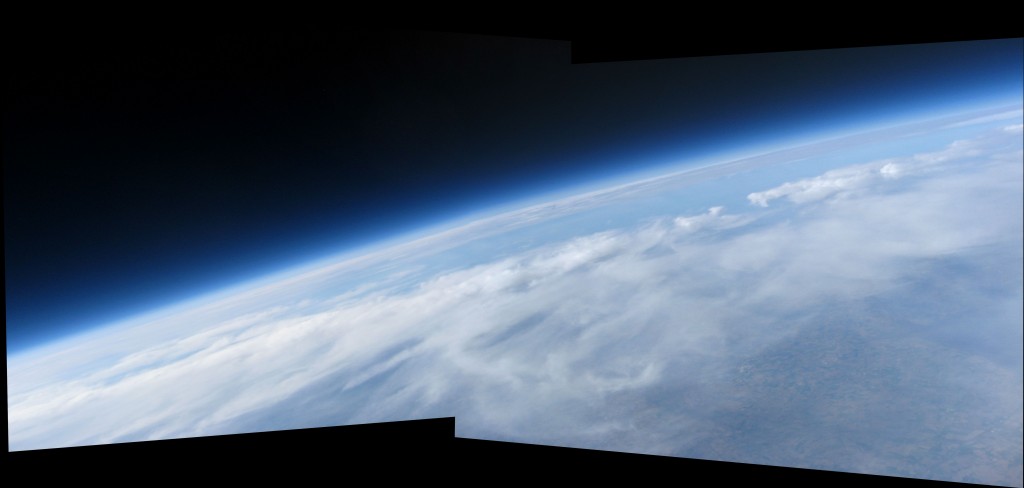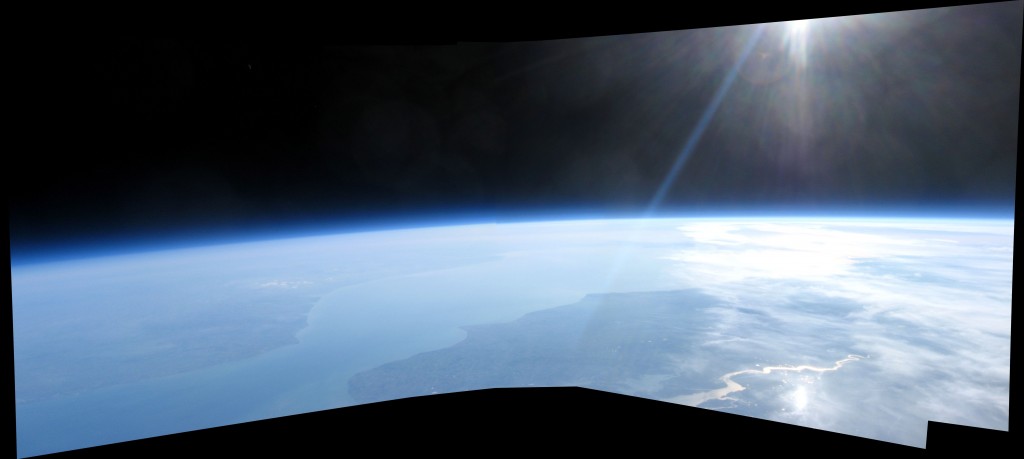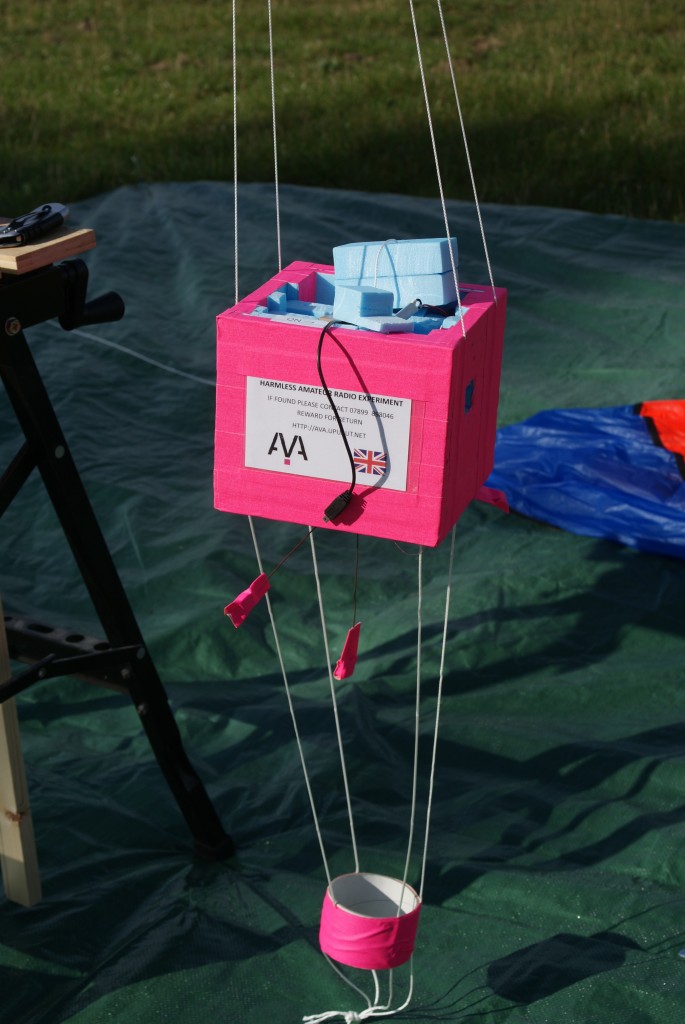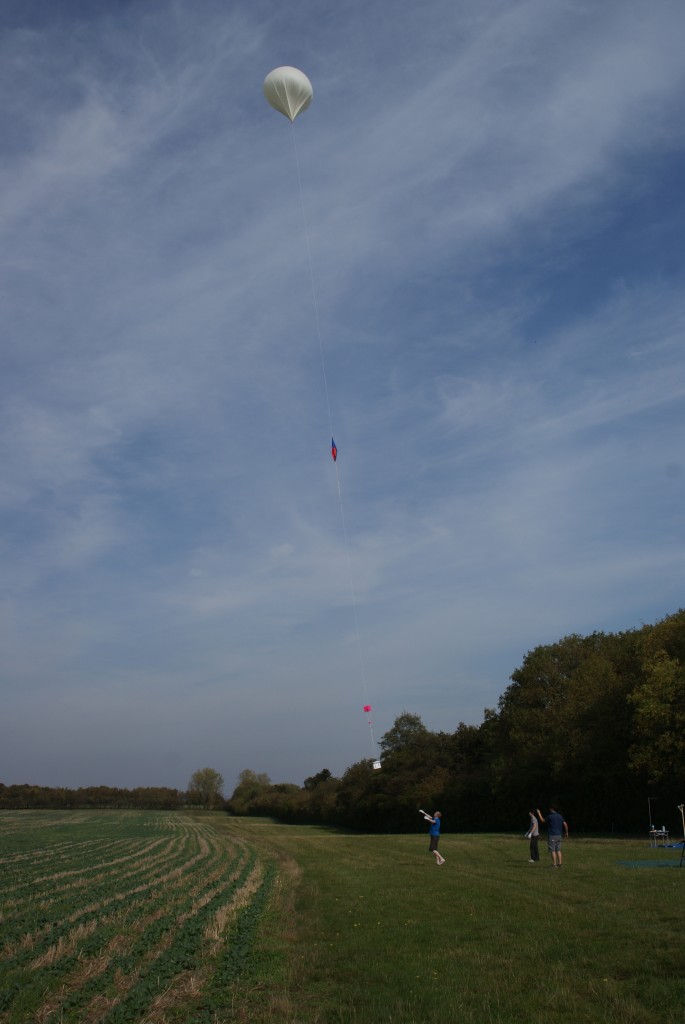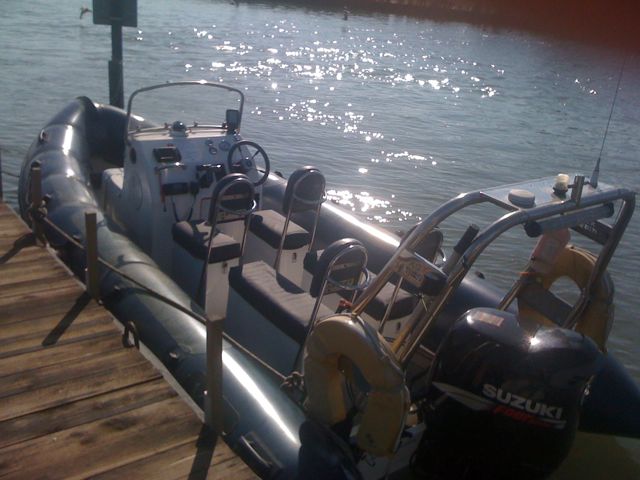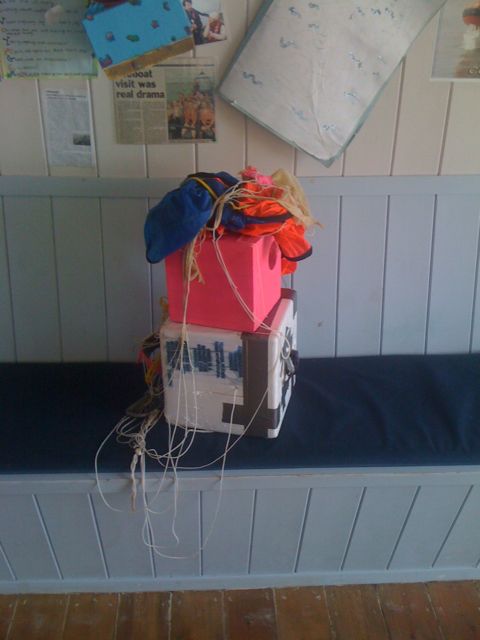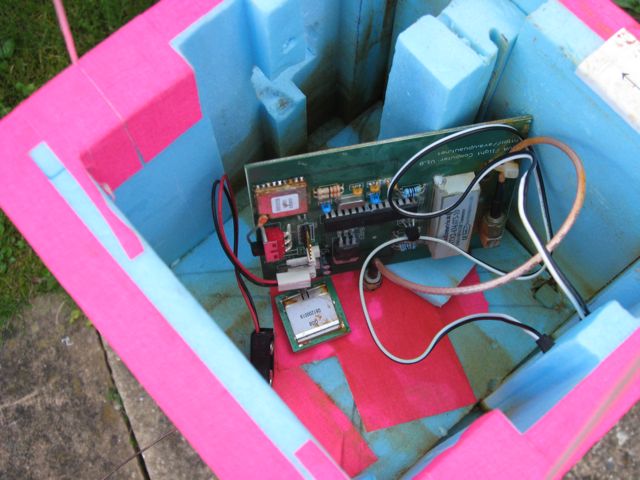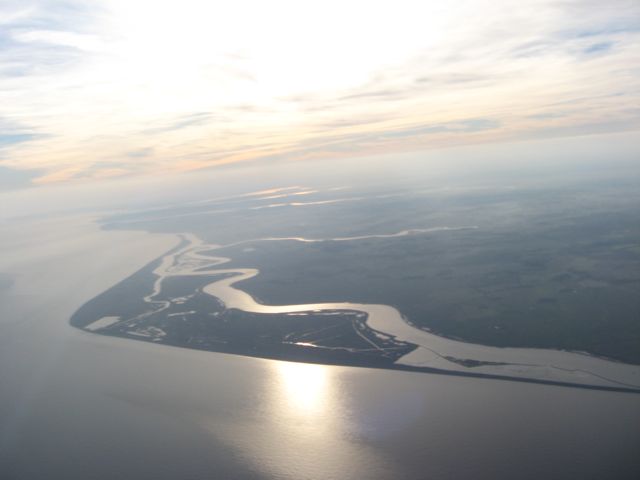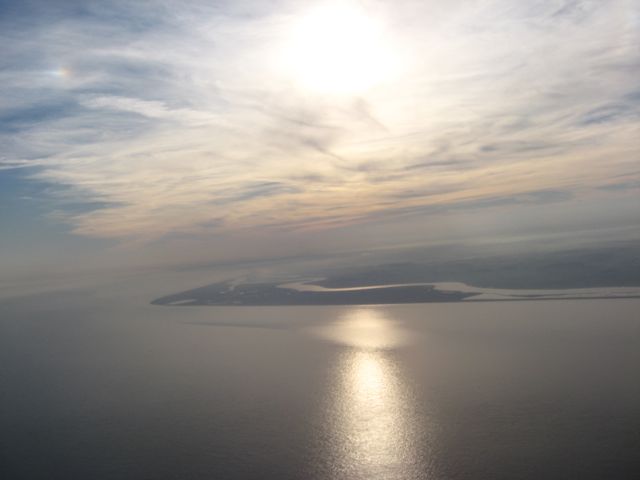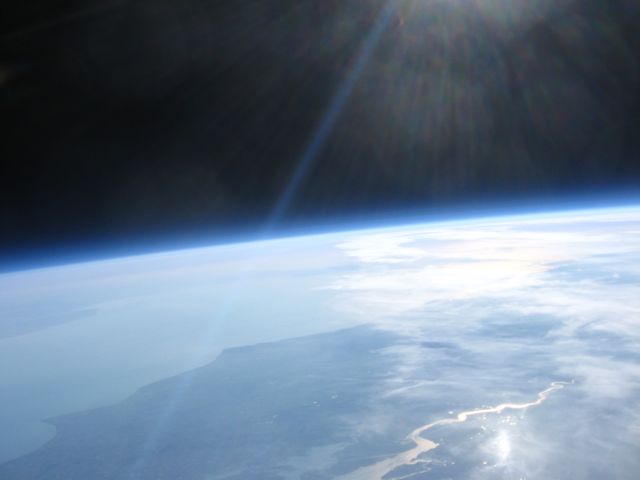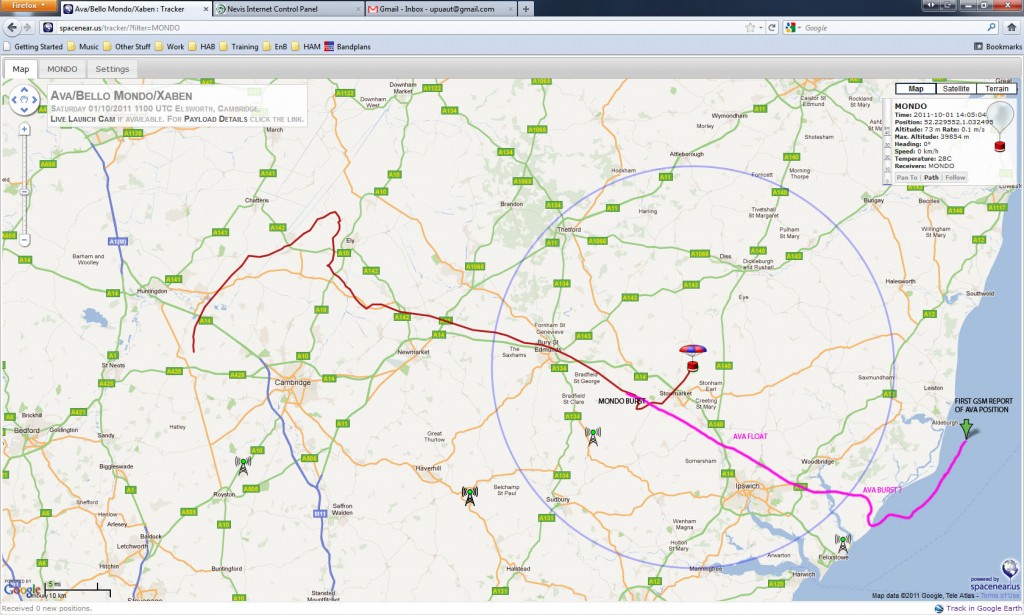Been another interesting weekend in the HAB world. Saturday the 22nd of October was the planned launch date of Apex Alpha, a project run by Sutton Grammar school. The plan was simple, light payload, big balloon (2000g Hwoyee) and a slow ascent rate. Altitude record in the bag ? Not exactly.
At about 11:30am UK time the balloon and payload was launched from Churchill College in Cambridge and started ascending at about 3.5m/s. About 20 minutes later I managed to pick it up from Yorkshire at approximately 3400 meters altitude (still way outside the radio horizon). The altitude of my house and antenna (Watson W-50) is about 300 meters giving a considerable boost the range of reception, something that would come in useful later…
As the balloon slowly climbed I was decoding perfectly at both 50 and 300 baud (Thanks for the tip on running 2 copies of dl-fldigi!). By 14:00 we had a staggering number of recievers across the map with some strings being returned by no less than 15 recievers simultanously. At 14:15 33900 meters up Apex Alpha left the UK mainland and headed out over the North sea.
About 15 minutes later it was apparent there was an issue, the alititude was stuck at 36200 meters, the balloon was no longer going up, it wasn’t coming down either. The balloon peaked about 36645 meters and then started to float towards the Netherlands.
Still recieving packets I decided to work out the distance from me to the balloon as it appeared we were going to break some distance records for reception. As the balloon floated over the Netherlands the UK receivers were at the edge of their effective range and the existing records for radio reception distance were broken.
At about 17:39 somewhere over Germany I recieved the last packet at 50 baud a range of over 750km, the 300 baud transmissions were lost at 677km. Again the altitude of my house must have helped as I was way out of the radio horizon at this point.
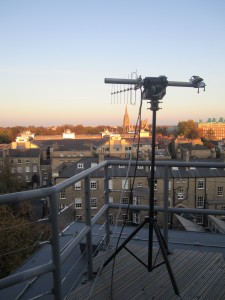 The only UK reciever still managing to recieve packets was the CUSF “trackotron” a computer controlled Yagi on a AZ/EL mount. With the elevation at 0′ the antenna was pointing horizontal towards the horizon, the last packet was recieved by CUSF at 18:18 at a range of 716km.
The only UK reciever still managing to recieve packets was the CUSF “trackotron” a computer controlled Yagi on a AZ/EL mount. With the elevation at 0′ the antenna was pointing horizontal towards the horizon, the last packet was recieved by CUSF at 18:18 at a range of 716km.
At this time a mad scramble to locate some hams in europe started. 2E0VIM and Darkside (sat at home in Australia!) started to use Globaltuners to recieve the signal as it slowly crossed germany. By this time word was getting out and DH1BDL started to decode packets which he posted to IRC and were uploaded manually.
Mean while in Skodstrup, Denmark a ham called OZ1SKY was trying to work out what the RTTY signal was on 434.635 he’d stumbled across. Realising it was RTTY but unable to decode it ( RX and TX were reversed) he was pointed in our direction and by about 19:40 we’d talked him through installing dl-fldigi and as Apex Alpha entered Poland we had reliable telemetry again.
With the temperature was dropping and with the temperature reporting -57’C the GPS started to drop out. For about 50 minutes the GPS was giving invalid information but the radio continued to transmit. At 21:34 the GPS sparked back into life reporting valid location information. With OZ1SKY being the only reciever attempts were made to locate some Polish hams but given the time we were unsucessful.
At 23:36, 775.6 km (50 baud RTTY record) from the payload OZ1SKY recieved his last packet indicating the altitude was 36300 meters and that all systems were nominal. Its entirely likely the payload continued onwards across Poland and into the Ukraine as it left the range of our final tracker.
The current where abouts of the payload are unknown.
It was a great day and seemed to get quite a few people interested in what we do. Apex Alpha got on Hackaday and Slashdot. Congratulations to the Apex Alpha team and many thanks to all the regular recievers and the ones we picked up on the way!

